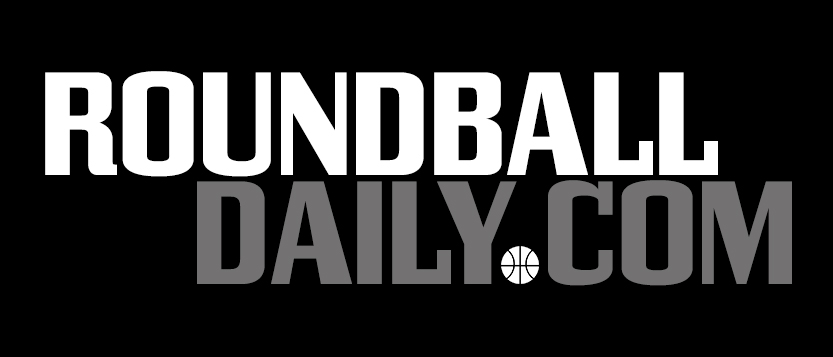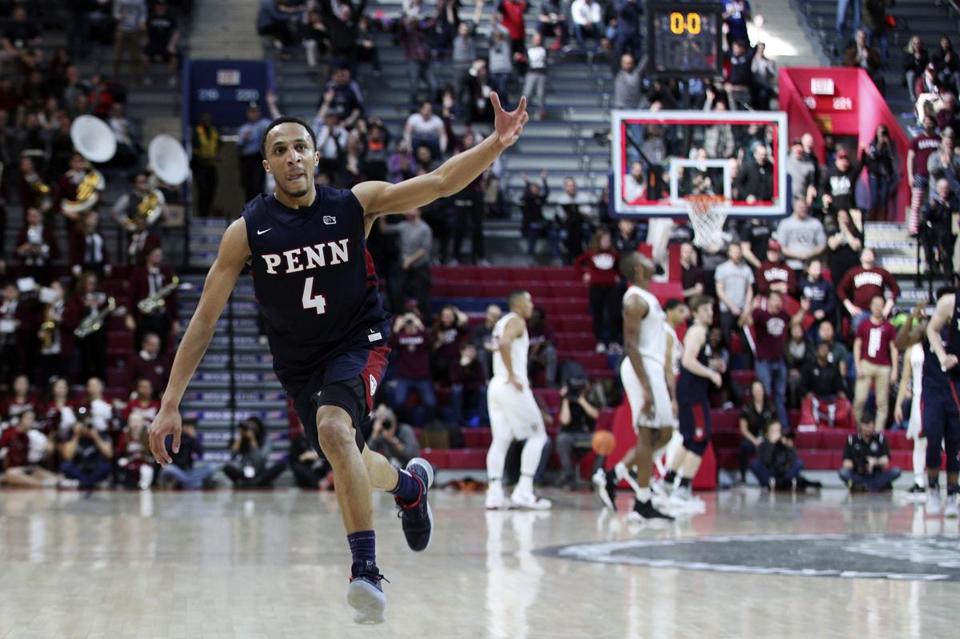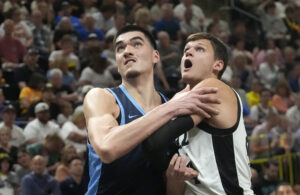- Attacking style not the only reason some Tottenham fans will back Ange Postecoglou until the bitter endPosted 4 months ago
- Paris Olympics takeaways: What did Team USA’s crunch-time lineup say about NBA’s hierarchy?Posted 9 months ago
- Zach Edey posted an easy double-double in Summer League debut. Here’s why he’ll succeed in NBAPosted 10 months ago
- What will we most remember these champion Boston Celtics for?Posted 11 months ago
- After long, seven-year road filled with excruciating losses, Celtics’ coast to NBA title felt ‘surreal’Posted 11 months ago
- South Florida men’s basketball is on an unbelievable heater– but also still on the bubblePosted 1 year ago
- Kobe Bufkin is balling out for Atlanta Hawks’ G League team. When will he be called up to NBA?Posted 1 year ago
- Former Knicks guards Immanuel Quickley, RJ Barrett may yet prove Raptors won the OG Anunoby tradePosted 1 year ago
- Rebounding savant Oscar Tshiebwe finally gets NBA chance he’s deserved for yearsPosted 1 year ago
- Is Tyrese Maxey vs. Tyrese Haliburton the next great NBA guard rivalry?Posted 2 years ago
Ivy League will rotate staging its tournament at all member schools, affecting possibilities of larger crowds
- Updated: March 1, 2019
Notwithstanding feelings expressed in the pages of some of its student newspapers, the Ivy League today committed itself to rotating its post season basketball tournaments among all its members.
The first two in 2017 and 2018 took place in the Palestra, home of the Pennsylvania Quakers. This year it moves to Yale, which has less than 50 percent of the seating capacity at the Palestra.
It doesn’t get much better. Two of those venues (Harvard and Dartmouth) accommodate ever fewer than the 2,550 who could cram into the John J. Lee Amphitheater at the Yale Payne Whitney Gymnasium. The other places, with the exception of Princeton, have only a slightly higher capacity.
As part of today’s announcement, Ivy League Executive Director Robin Harris explained that the rotation would allow the “atmosphere and energy” of the tournaments to be shared “with each of our campus communities and giving all of our devoted fan bases an opportunity to experience Ivy Madness in their own venue.”
We believe there are fallacies in the above:
1) Once every eight years, during which there are many turnovers in student populations, is hardly sharing.
2) The tournaments take place about the time of the annual spring break, when most colleges are largely deserted and there are relatively few students on hand to go to the games, wherever they take place.
3) Staging the event on one of the Ivy campuses, even if the school is not on vacation, is no guarantee that the host school would even be playing. Only four teams qualify for the men’s and women’s post season. Picture, if you can, the tournament being played at Dartmouth, but neither of the Big Green’s teams is in the top four. In that case, no Dartmouth team would be playing. How many people in and around Hanover, N.H. would then care enough to attend, regardless of the admission charge?
Many followers of Ivy League basketball had hoped for future tournament sites to be large enough to accommodate bigger numbers, especially on the first day when there are eight teams on hand for four games. Rather than uncomfortably gyms and in some cases out of the way places, the games could be played at non member schools such as the University of Connecticut , Fordham, or St. John’s of New York. Or they could take place in privately owned buildings like the Webster Bank Arena in Bridgeport, the Mohegan Sun Arena in Uncasville, Conn., the Hartford Civic Center, or the Dunkin’ Donuts Center in Providence.
Ticket prices too high
Instead, the league is going the other way, staying on the campuses of its own schools. Any concerns that the buildings are not big enough to accommodate the ticket demands are offset by the scale of admission prices. For instance, the first day this year has a price tag of $95.00 per seat. That’s correct, $95.00 for one, yes that’s ONE ticket. Forget about two games. Fans are usually interested just in the game their team is involved in.
The championship game the next day costs $75. Courtside seats are even more. Those prices are, in this writer’s opinion, unconscionable and high enough to discourage all but the diehards and fairly affluent from attending. Maybe that’s the idea – the old law of supply and demand. A short supply increases the demand, and sells out the gym the easy and, at those prices, the profitable way.
But is all that fair for the average person who supports Ivy League basketball all season long?
Is that a proper way to sell a product and stimulate higher interest?
We believe the answer to each of the above is an emphatic NO.
What the future may hold
In case you would like to plan in advance and start now saving enough to attend, here is the future schedule, along with the present seating capacities of the venues:
2020 – Harvard, Levites Pavillon – 2,195
2021 – Princeton, Jadwin Gymnasium – 6,854
2022 – Brown, Pizzitola Sports Center – 2,800
2023 – Cornell, Newman Arena – 4,473
2024 – Dartmouth, Leede Arena – 2,100
2025 – Columbia, Levien Gymnasium – 2,700
Looking at facts and figures the only decent size crowds that can realistically be expected would be at Princeton 6,854 and Cornell 4,473, and Ithaca, N.Y. is probably too remote for followers of the other teams to get there in large enough numbers.
The other places (Brown, Dartmouth, Columbia and Harvard) hold fewer than 3,000. And remember, the capacities cited include seats for expanded media personnel, bands and cheering squads, college and league administrators, and friends and relatives of the players. The games would be attended mostly by privileged, intimate gatherings, close in number to those who are at many high schools gyms.
It leads us to wonder if the Ivy League fears that its tournament may develop into a smaller version of the NCAA’s March Madness. Yet it tries to capitalize and jump on the bandwagon by referring to its post season event as Ivy Madness.
Maybe it should just be called Madness.




